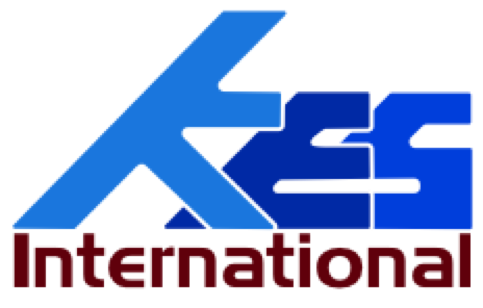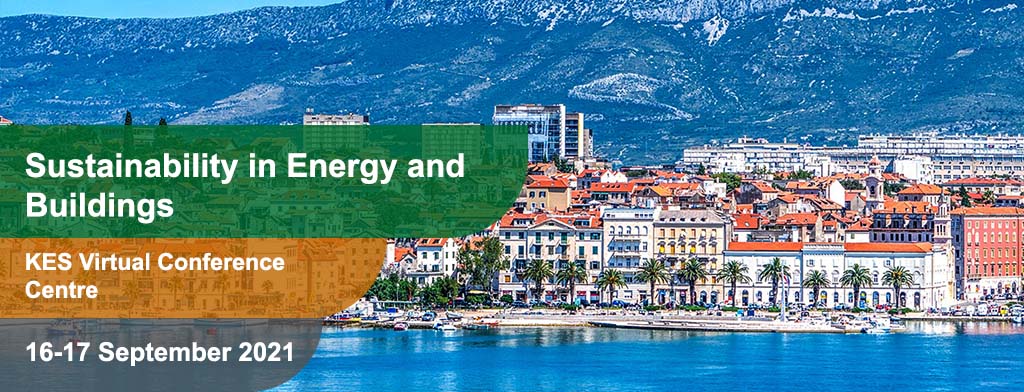General Track
Full track papers, short track papers and doctoral submissions within the scope of the conference may be submitted to one of the following General Track sessions. These papers will be reviewed by knowledgeable referees, and if accepted, allocated to sessions for presentation at the conference.
Authors may also submit to an Invited Session if invited to do so by the session chair, or their paper fits the scope of the session better than the General Track.
The General Track Sessions are as follows:-
Note: The content of the tracks is subject to review and change.
G01: Sustainable & Resilient Buildings
For New and Existing Buildings to meet the environmental, economic, and social and community Sustainability targets for 2021 and beyond, to reduce primary energy use, cut operational and embodied carbon emissions and to mitigate climate change reality for Society's Survival and Wellbeing, then Resilience is of equal. Resilience considers diversity, cohesion, efficiency, and adaptability of systems, to improve Buildings and the wider Built Environment against physical, health, economic and social shocks and stresses such as the emergence of the Covid19 pandemic in 2020 affecting global life.
The Sustainable & Resilient Buildings track invites papers that consider both Sustainability and Resilience drivers when designing, or manufacturing, or constructing, or commissioning, or operating or enhancing the performance of existing or new buildings, their controls and the wider built environment. Different scales can be considered from single building, or community, or neighbourhood, or district, or town/city, or region, or national, or international or global.
Sustainable & Resilient Buildings could include new nearly-zero carbon, zero carbon, zero carbon plus, and energy positive buildings; or existing buildings that are retrofitted with improvements to increase their performance, occupant comfort, reduce energy usage and increase their acoustic and fire performance for their users.
There are numerous processes involved in creating and adapting Sustainable & Resilient Buildings, and the Built Environment including (bot not limited to) the application of architectural design, building engineering, science, and technology to assess, monitor, optimise, reflect upon and test Sustainable & Resilient Buildings, their Controls and the wider Built Environment.
In this track, papers are invited that address one aspect or more of the above or below considerations and topics:
- Sustainable & Resilient buildings for comfort and health; building construction and envelope systems; HVAC systems; user behaviour, operational vs embodied energy. Analysis through either quantitative or qualitative techniques during the design, or manufacturing, or construction, or commissioning, or handover, or operation or retrofit and refurbishment processes one or more scales.
- Techniques can include: desktop (theoretical) case studies; physical testing of internal comfort and health conditions versus energy use and climate conditions; building users comfort and health; occupant and design team interviews; other field work.
- Building performance assessment: dynamic thermal modelling, dynamic hygrothermal modelling, thermal bridge analysis; thermography; air tightness testing; heat flux testing; energy profiling; monitoring energy use, thermal comfort, indoor air quality versus climatic conditions; moisture mapping; analysing embodied carbon; whole building smoke tests; co-heating; fire performance assessment and building safety measurements and surveys; acoustic measurements, including audits, surveys and tests.
- Design tools and methodologies: Building Information Modelling; education and training; development of assessment, monitoring and optimisation methods; comparison of methodologies and regulations in one country or between countries; modelling, optimisation and validation of building, neighbourhoods, and cities.
- Post occupancy and in-use evaluation: building system performance; building integrated renewable energy performance; user interaction in buildings, neighbourhoods, and towns/cities; use and evaluation of user guides; evaluation of design team and occupant walk-throughs; occupant health and quality of life.
- Future thinking, to enable sustainable and resilient buildings and the built environment at any scale, for the survival and revival of society: locally, regionally, nationally, or globally.
Chair:
John Littlewood, Cardiff Metropolitan University, Wales, UK
G02: Sustainable Energy Technologies
The Sustainable Energy Technologies track focuses on recent developments in the field of renewable energy and associated sub-systems to contribute to meeting environmental and economic requirements of industry and society.
Papers submitted under this track may be on the following topics
(although this is not an exclusive list):-
G02a: Renewable Energy Technologies
- Harvesting Renewable energy: Solar photovoltaic energy,
solar thermal energy systems, concentrating solar power, wind power;
wave, ocean, tidal and hydro power; biomass and bio-energy;
geothermal energy technologies; ground-source and air-source heat pumps;
fuel cells, materials for renewable energy technologies.
- Energy storage: Battery technologies, hydrogen production and storage,
hydro pump storage, compressed air storage, ultra-capacitors,
novel storage technologies.
- Integration of renewable energy: Grid integration of renewable energy,
integration of renewable energy sources with buildings and the built
environment, power conversion systems, designs for renewable energy
integration, application of heat pumps; grid reliability with renewable
energy, combined heat and power; renewable energy based district
heating and cooling.
.
- Ancillary Technologies for Sustainable Energy: Power electronics
for energy conversion and switching; voltage conversion, frequency
conversion, power factor correction.
.
- Energy policies - financial incentives, policies, regulations and
solutions for the transition to renewable energy.
Future energy needs and environmental constraints require that the electrical generation and distribution system (often described as 'the grid') takes on a different form in the future to its current one. 'Smart Grids' involve the incorporation of electronic communication, digital control and artificial intelligence into the grid. 'Micro Grids' are self-contained sections of the main grid, containing generators and consumers, and able to 'island' or work independently when necessary. The future grid infrastructure will contain smart and micro grid elements.
Papers submitted under this track may be on the following topics
(although this is not an exclusive list):-
- Smart grids (modelling, technologies, management and control,
software, applications, challenges)
- Component Technologies: energy generation sources, energy storage;
communications system, power line communications, wireless and GPRS
systems; energy management; smart interconnection and control systems
through layered distributed artificial intelligence; SCADA.
- Interconnection with the Macro-Grid: standardisation requirements,
power quality, voltage and frequency matching, reactive power,
grid-tie inverters and other power electronics.
- Local / Internal Markets and Trading: internal markets,
prosumers vs consumers, peer-peer trading, distributed ledgers,
market trading platforms, blockchain, utility and regulatory reform
for micro-grids, regulatory models.
- Models and Design: grid topologies, mini, micro and nano grids;
software tools for micro-grid design and optimisation,
case studies and examples.
Chairs:
Robert J. Howlett, Bournemouth University, UK &
Co-chair TBN

